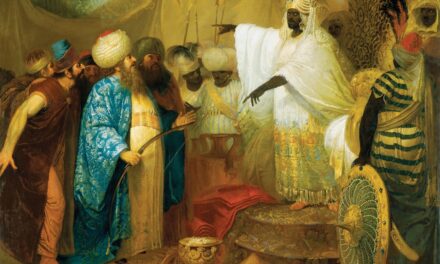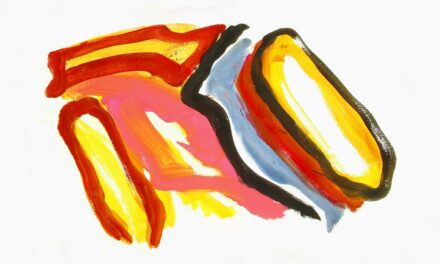Salvador Dalí was born on 11 May 1904 in Figueres, Catalonia, Spain. He was the son of a prominent notary and a mother who encouraged his artistic talents from a young age. His early influences included Impressionist and Post-Impressionist painters such as Pablo Picasso and Joan Miró, as well as the works of Sigmund Freud, whose theories on the subconscious mind would later greatly influence Dalí’s surrealist art.
Dalí attended the Royal Academy of Fine Arts of San Fernando in Madrid, where he developed his skills as a painter and began to experiment with different artistic styles. It was during this time that he also became involved with the avant-garde movement, which would later lead him to join the Surrealist movement. Salvador Dalí’s early life was marked by tragedy, as his mother died of breast cancer when he was just 16 years old.
This event had a profound impact on the young artist and would later be reflected in his work, particularly in his exploration of themes related to death and decay. Despite this loss, Dalí continued to pursue his passion for art and eventually moved to Paris, where he became acquainted with other influential artists and writers, including Pablo Picasso and André Breton. These early experiences and influences would shape Dalí’s artistic vision and set the stage for his groundbreaking contributions to the Surrealist movement.
Summary
- Salvador Dalí was born in Figueres, Catalonia, and was heavily influenced by his parents and the landscape of his hometown.
- Dalí joined the Surrealist movement in the 1920s and created iconic works such as “The Persistence of Memory” and “The Elephants”.
- Known for his eccentric personality and flamboyant style, Dalí employed techniques such as meticulous detail, juxtaposition of unrelated objects, and use of symbolism in his art.
- Dalí’s personal life was marked by controversies, including his marriage to Gala, and his support for General Franco’s regime in Spain.
- In his later career, Dalí continued to create art and left a lasting legacy, influencing artists and popular culture around the world.
- Dalí’s impact on popular culture can be seen in films, fashion, and advertising, with his distinctive imagery and persona being widely recognised.
- The Dalí Museum in St. Petersburg, Florida, houses the largest collection of Dalí’s works outside of Europe, and his art continues to be exhibited in museums and galleries worldwide.
Surrealist Movement and Key Works
Salvador Dalí’s involvement with the Surrealist movement began in the 1920s, when he joined the group of avant-garde artists led by André Breton. The Surrealists sought to unlock the creative potential of the subconscious mind and explore the realm of dreams and fantasy through their art. Dalí’s unique style and imaginative approach to painting quickly made him a prominent figure within the movement.
His early works, such as “The Persistence of Memory” (1931), became iconic symbols of Surrealist art, featuring melting clocks and dreamlike landscapes that challenged traditional notions of reality. One of Dalí’s most famous works, “The Persistence of Memory,” is a prime example of his ability to create visually striking and thought-provoking imagery. The painting features a desolate landscape with melting clocks draped over various objects, creating a sense of timelessness and disorientation.
This iconic piece has been interpreted in various ways, with some seeing it as a meditation on the nature of time and memory, while others view it as a reflection of the subconscious mind. Regardless of its interpretation, “The Persistence of Memory” remains a testament to Dalí’s ability to capture the surreal and enigmatic aspects of human experience. In addition to his paintings, Dalí also explored other artistic mediums, including sculpture, film, and photography.
His collaboration with filmmaker Luis Buñuel on the surrealist film “Un Chien Andalou” (1929) further solidified his reputation as a leading figure in the Surrealist movement. The film’s dreamlike imagery and unconventional narrative structure reflected Dalí’s commitment to pushing the boundaries of artistic expression and challenging societal norms. Throughout his career, Dalí continued to produce groundbreaking works that defied categorization and captivated audiences with their surreal and provocative imagery.
Dalí’s Unique Style and Techniques

Salvador Dalí’s unique style and techniques set him apart as one of the most innovative and influential artists of the 20th century. His use of meticulous detail and precise rendering gave his paintings a hyper-realistic quality, while his imaginative subject matter and dreamlike imagery pushed the boundaries of traditional art forms. Dalí’s technique often involved using thin layers of paint to create luminous effects and intricate textures, resulting in visually stunning compositions that captivated viewers with their depth and complexity.
One of Dalí’s signature techniques was his use of “paranoiac-critical method,” a term he coined to describe his process of tapping into the subconscious mind to create art. This approach involved harnessing the power of irrational thought and free association to unlock hidden meanings and symbols within his work. By embracing the irrational and the illogical, Dalí was able to produce art that transcended conventional interpretations and invited viewers to explore their own subconscious thoughts and desires.
In addition to his painting technique, Dalí also experimented with unconventional materials and methods, such as fumage (creating images using smoke) and decalcomania (pressing paint between two surfaces to create textured patterns). These innovative approaches allowed him to achieve a level of visual complexity and depth that was unparalleled in contemporary art. Dalí’s commitment to pushing the boundaries of artistic expression and exploring new techniques cemented his reputation as a visionary artist whose work continues to inspire and intrigue audiences around the world.
Controversies and Personal Life
Salvador Dalí’s personal life was marked by controversy and eccentricity, which only served to further fuel his enigmatic public persona. His flamboyant personality and penchant for self-promotion often overshadowed his artistic achievements, leading to both admiration and criticism from the public and art critics alike. Dalí’s marriage to Gala Éluard, a Russian immigrant and fellow artist, also attracted attention due to their unconventional relationship dynamics and extravagant lifestyle.
Despite his success as an artist, Dalí faced criticism for his perceived commercialization of his work and his willingness to collaborate with mainstream media and advertising agencies. Some critics accused him of prioritizing fame and fortune over artistic integrity, while others praised him for his ability to reach a wider audience through popular culture. Regardless of these controversies, Dalí remained unapologetic in his pursuit of artistic freedom and self-expression, often using his public persona as a platform to challenge societal norms and provoke thought.
In his later years, Dalí’s health began to decline, leading to speculation about the impact of his eccentric lifestyle on his well-being. He spent his final years living in seclusion at his home in Port Lligat, Spain, where he continued to produce art despite his declining physical health. After suffering a heart attack in 1984, Dalí’s ability to create art was severely limited, marking the end of an era for one of the most influential artists of the 20th century.
Later Career and Legacy
Despite facing health challenges in his later years, Salvador Dalí continued to produce art that reflected his enduring creativity and passion for innovation. His later works explored themes related to religion, science, and mythology, showcasing a continued commitment to pushing the boundaries of artistic expression. Although some critics viewed these later works as a departure from his earlier surrealist style, they nevertheless demonstrated Dalí’s ability to adapt and evolve as an artist while maintaining his distinctive visual language.
Dalí’s legacy continues to inspire artists and audiences around the world, with his influence extending beyond the realm of visual art into popular culture and everyday life. His iconic imagery has been reproduced on everything from posters and t-shirts to household items and consumer products, cementing his status as a cultural icon whose impact transcends traditional artistic boundaries. In addition to his artistic legacy, Dalí’s contributions to film, literature, and fashion have further solidified his place in popular culture as a visionary whose influence continues to resonate with contemporary audiences.
Dalí’s Impact on Popular Culture

Salvador Dalí’s impact on popular culture is undeniable, with his distinctive style and imagery permeating various aspects of contemporary society. His collaborations with filmmakers such as Alfred Hitchcock and Walt Disney brought his surreal vision to a wider audience, while his influence on fashion designers like Elsa Schiaparelli helped redefine the boundaries between art and fashion. Dalí’s ability to transcend traditional artistic mediums and engage with popular culture made him a trailblazer whose impact continues to be felt today.
In addition to his contributions to film and fashion, Dalí’s influence can be seen in music, literature, and advertising. His iconic imagery has been referenced in countless songs, novels, and commercial campaigns, demonstrating the enduring appeal of his surrealistic vision. From album covers to television commercials, Dalí’s imagery has become synonymous with creativity and innovation, inspiring generations of artists and creators to push the boundaries of artistic expression.
The Dalí Museum and Other Exhibitions
The legacy of Salvador Dalí is preserved in numerous museums around the world, with one of the most prominent being The Dalí Museum in St. Petersburg, Florida. This museum houses an extensive collection of Dalí’s works, including paintings, sculptures, drawings, and prints that showcase the breadth of his artistic vision.
The museum also features special exhibitions and educational programs that aim to engage audiences with Dalí’s life and work, providing a comprehensive overview of his enduring impact on art history. In addition to The Dalí Museum, numerous other institutions around the world have hosted exhibitions dedicated to Salvador Dalí’s work, further cementing his status as one of the most influential artists of the 20th century. These exhibitions offer audiences the opportunity to explore the depth and complexity of Dalí’s artistic output while gaining insight into the cultural significance of his contributions to Surrealism and modern art.
Through these exhibitions, Dalí’s legacy continues to be celebrated and appreciated by art enthusiasts from all walks of life.
If you are interested in learning more about the evolution of art, you may want to check out the article on prehistoric art on Think of Art. This article provides an introduction to the earliest forms of artistic expression, giving insight into the origins of creativity and visual communication. Understanding prehistoric art can provide a valuable context for appreciating the work of artists like Salvador Dalí, whose innovative and surrealistic style was influenced by a rich history of artistic expression. https://thinkofart.com/an-introduction-to-prehistoric-art/
FAQs
Who is Salvador Dalí?
Salvador Dalí was a Spanish surrealist artist known for his eccentric personality and distinctive artistic style. He was born in 1904 in Figueres, Catalonia, Spain, and became one of the most famous and influential artists of the 20th century.
What is Salvador Dalí known for?
Salvador Dalí is known for his surreal and dreamlike paintings, which often featured bizarre and distorted imagery. He also gained notoriety for his eccentric behaviour and flamboyant persona.
What are some of Salvador Dalí’s most famous works?
Some of Salvador Dalí’s most famous works include “The Persistence of Memory” (1931), “The Elephants” (1948), “The Sacrament of the Last Supper” (1955), and “Galatea of the Spheres” (1952).
What is surrealism?
Surrealism is an artistic and literary movement that emerged in the early 20th century, characterized by its exploration of the unconscious mind, dream imagery, and irrational juxtapositions. Salvador Dalí was a prominent figure in the surrealist movement.
What was Salvador Dalí’s artistic style?
Salvador Dalí’s artistic style is often described as surrealism, characterized by his use of dreamlike imagery, meticulous attention to detail, and a fascination with the subconscious mind. He also experimented with other artistic styles, such as cubism and impressionism.
What influence did Salvador Dalí have on the art world?
Salvador Dalí’s influence on the art world was significant, as he helped popularize surrealism and became one of the most recognisable and controversial artists of his time. His unique artistic vision and flamboyant personality continue to inspire and intrigue artists and art enthusiasts around the world.




